Equation of a Straight Line (AQA GCSE Further Maths): Revision Note
Exam code: 8365
Equation of a straight line
What is the equation of a straight line?
y = mx + c is the equation for any straight line
m is gradient given by “difference in y” ÷ “difference in x” or
c is the y-axis intercept
An alternative form is ax + by + c = 0
where a, b and c are integers
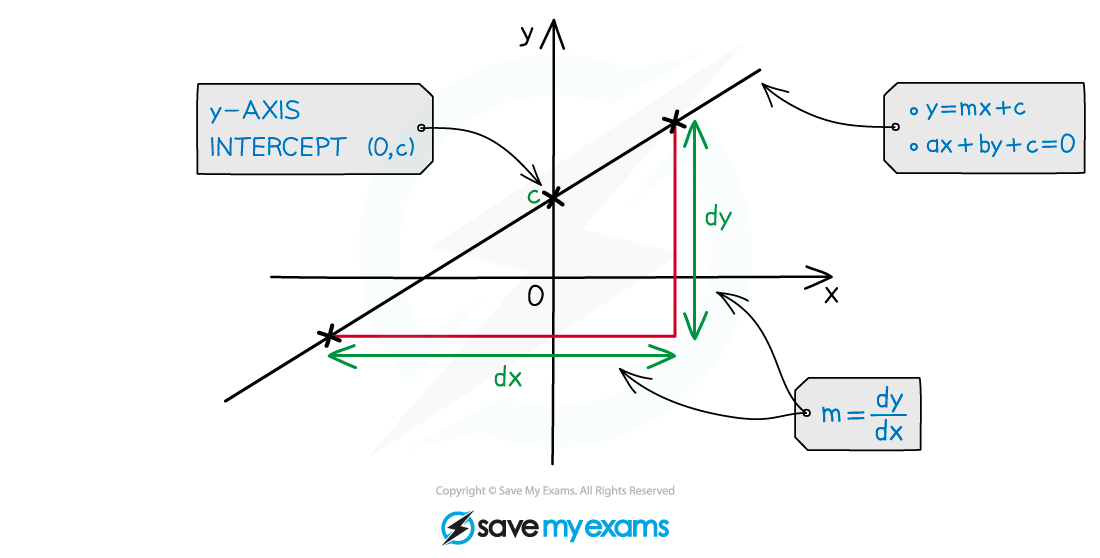
How do I find the equation of a straight line?
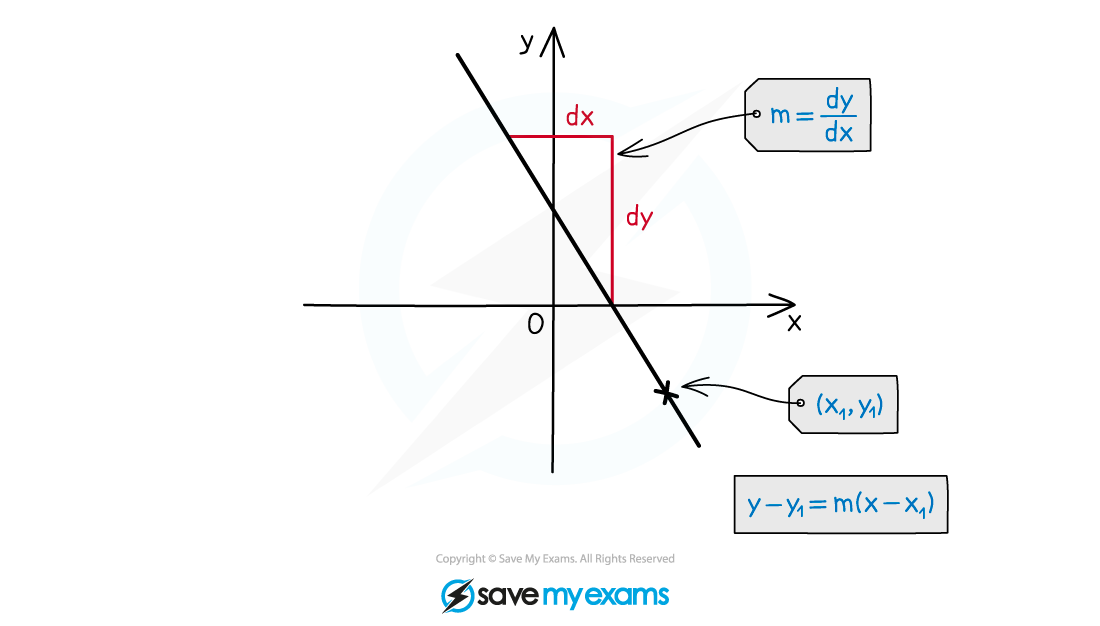
Two features of a straight line are needed
gradient, m
a point the line passes through, (x1, y1)
The equation can then be found using y – y1 = m(x - x1)
This can be arranged into either y = mx + c or ax + by + c = 0
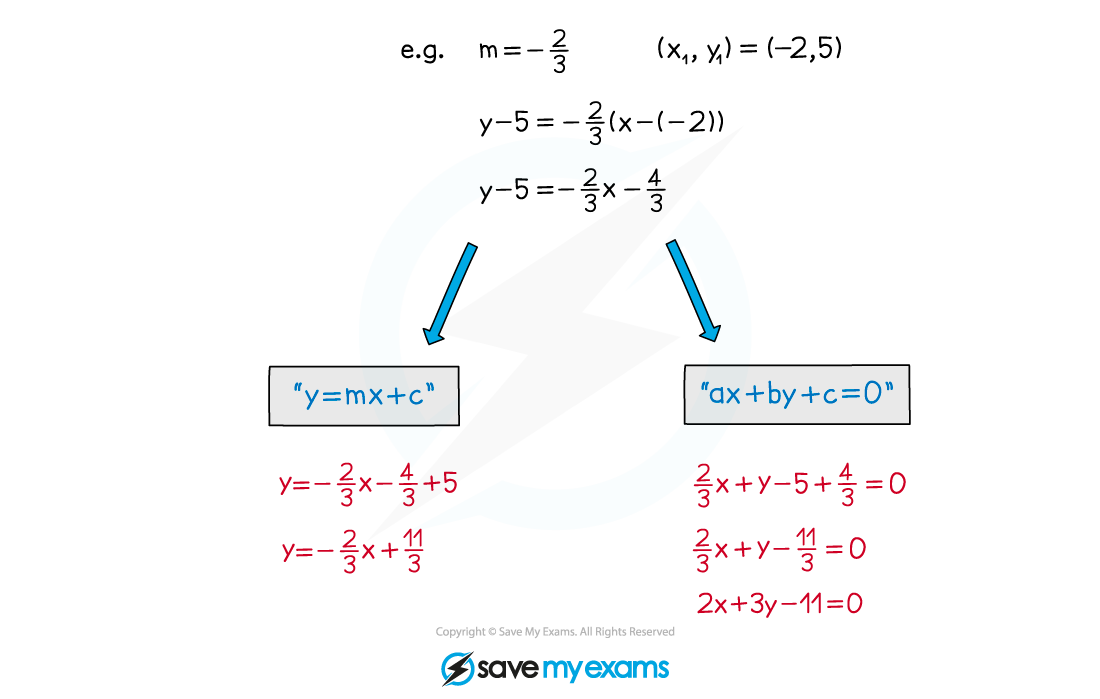
How do I find the gradient of a straight line?
There are lots of ways to find the gradient of a line
Using two points on a line to find the change in y divided by change in x
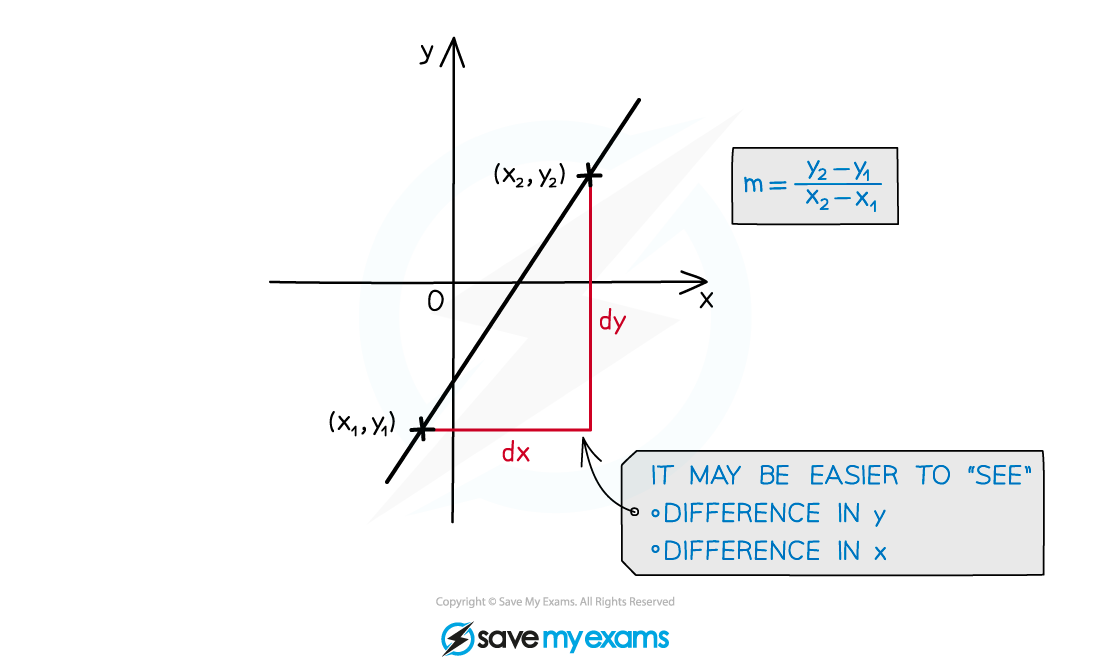
Using the fact that lines are parallel or perpendicular to another line
see Gradients - Parallel and Perpendicular Gradients
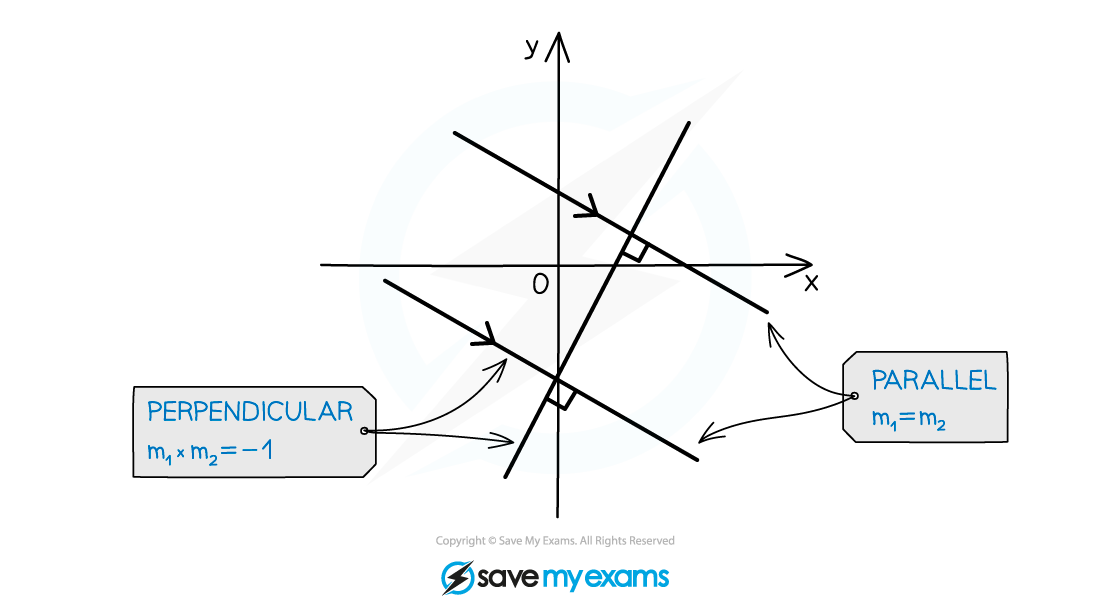
Using Tangents and Normals - Differentiation
see Tangents & Normals
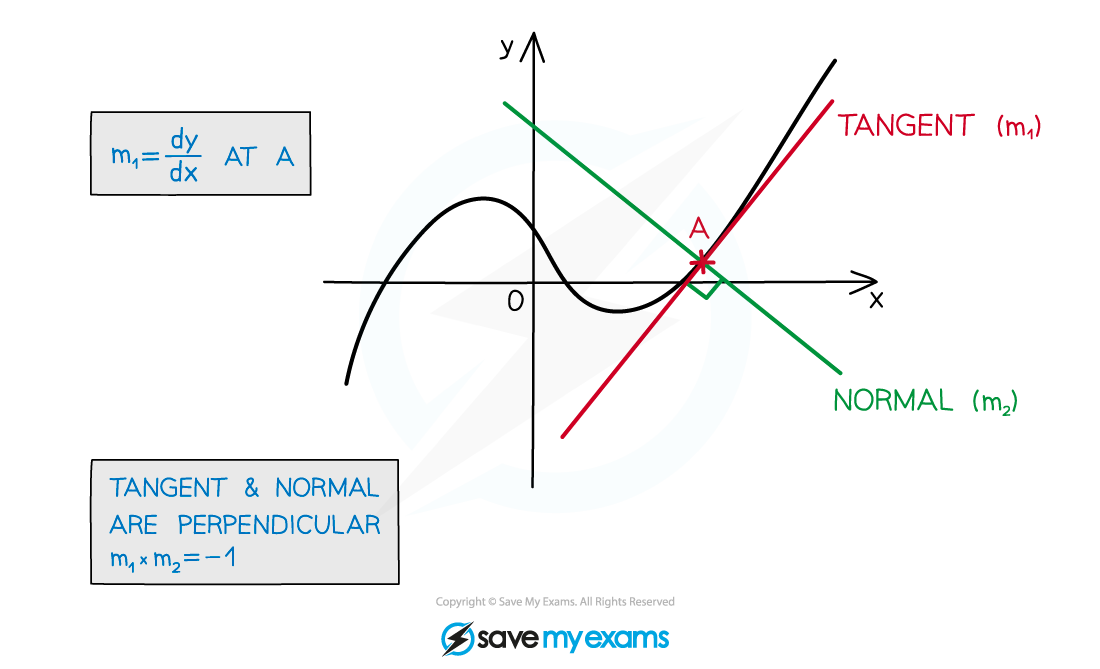
Other ways
Collinear lines are the same straight line so gradients are equal
Angle facts and circle theorems
e.g. a radius and tangent are perpendicular
Worked Example
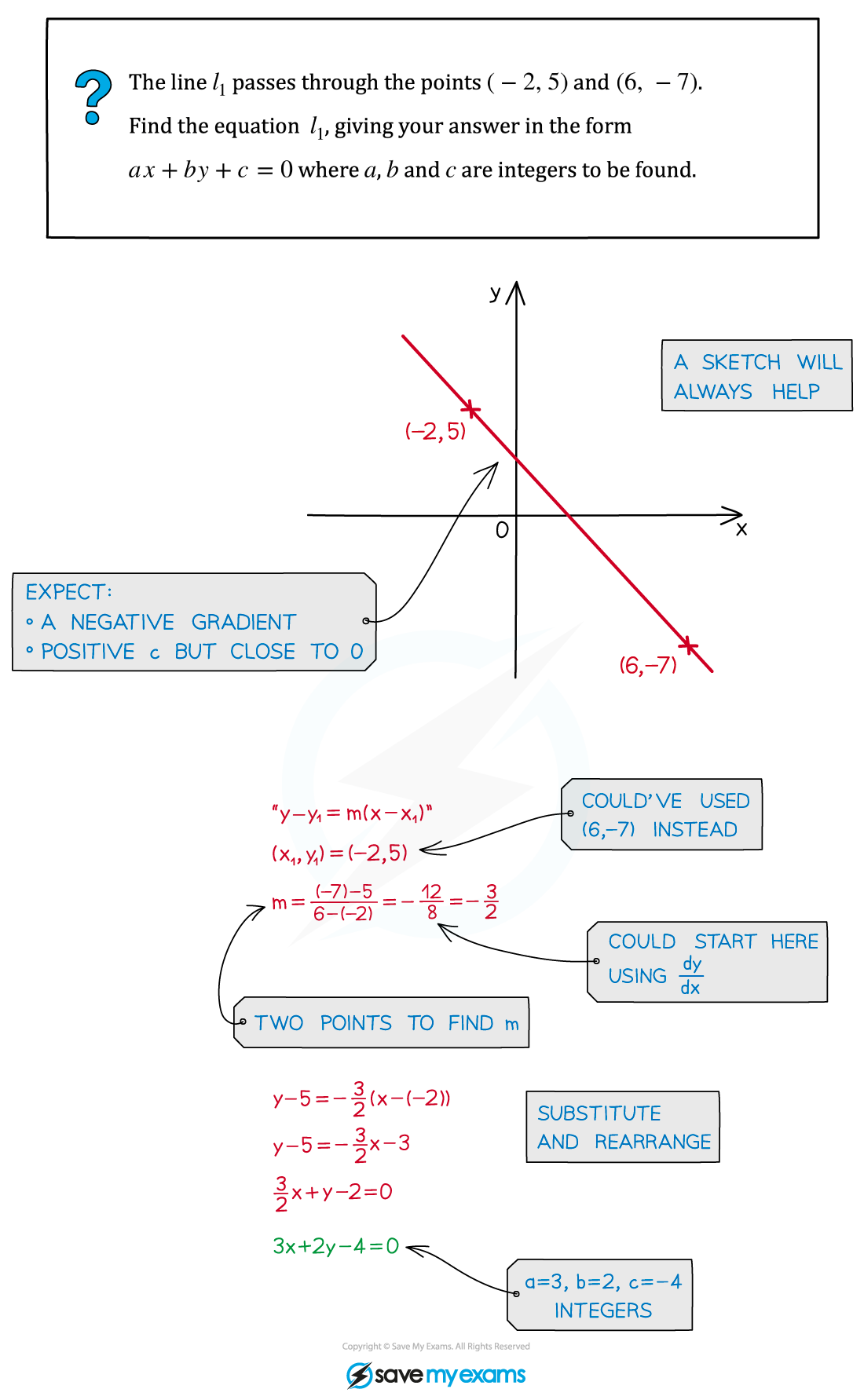
Intersection of two lines
How do I find where two lines intersect?
The coordinates of the point of intersection of two lines,
, is the solution for
and
when the pair of equations are solved simultaneously
A pair of parallel lines will not have any intersections, and therefore no solutions to the simultaneous equation, so it is useful to check if the lines are parallel before trying to solve them
We can find the solutions using either substitution or elimination
The most straight-forward method for finding where two straight lines intersect is to
Rearrange each line's equation to
Substitute one expression for
into the other equation, in place of
Solve to find
Substitute the value of
into either line's equation to find
The method is exactly the same when finding where a line and a curve, or two curves, intersect
When finding where a quadratic curve and a line intersect, you will end up with a quadratic equation to solve, and there could be either 2, 1, or 0 solutions
This corresponds to the number of intersections of the line and the curve
The same idea can be used to find the intersection of a line or curve with the
or
axis
The equation of the
-axis is
The equation of the
-axis is
Either of these can be substituted into the equation of the line or curve and solved
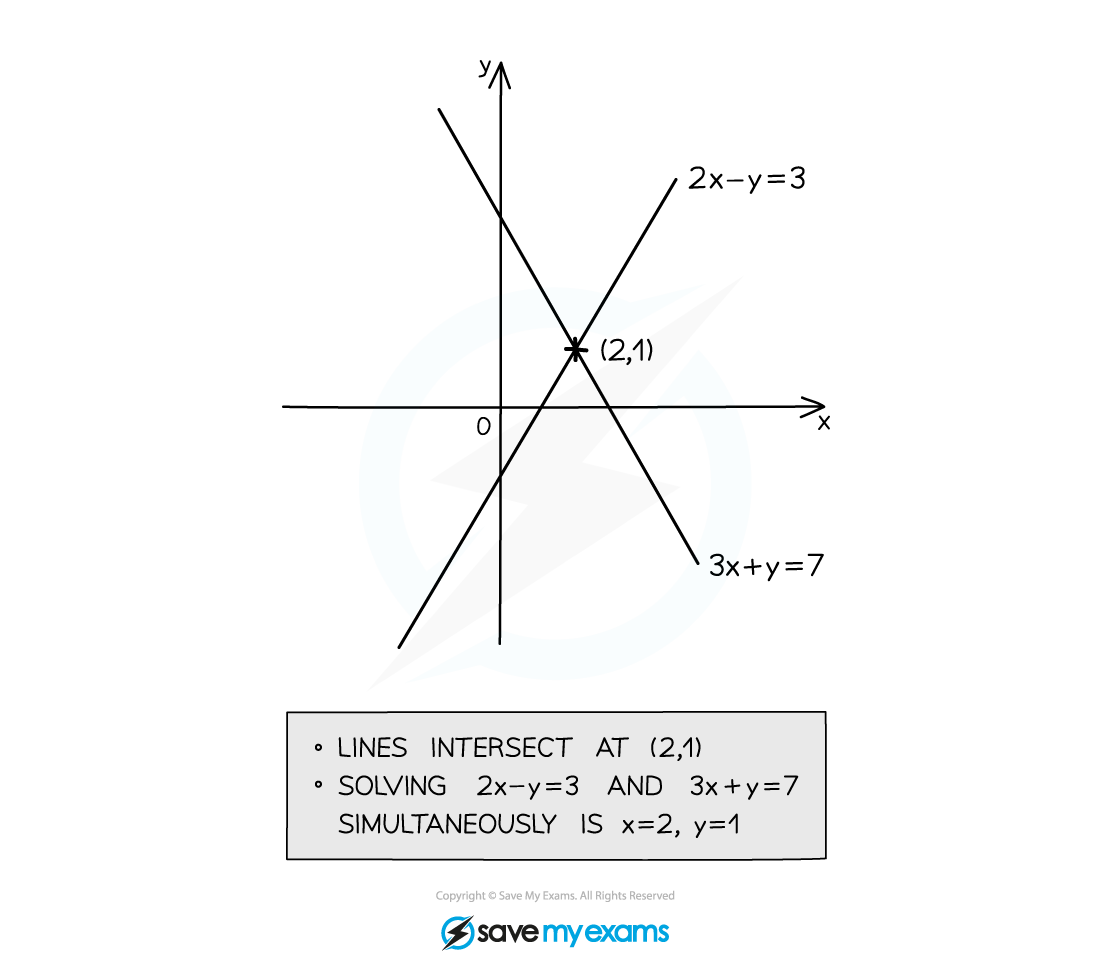

Examiner Tips and Tricks
Consider the types of graphs (straight line, quadratic, cubic) that you are finding the intersections of
Sketch a graph to help you consider the number of intersections there will be, and roughly where those will be
Worked Example
Find the points of intersection of the following
(a) with the
-axis and
-axis
The equation of the -axis is
Substitute this in to the other (given) equation
Solve for
There is no need to solve for , since
The point of intersection with the x-axis is (12, 0)
The equation of the -axis is
Substitute this in to the other (given) equation
Solve for
There is no need to solve for , since
The point of intersection with the y-axis is (0, 8)
(b) and
These are the equations of two straight lines
The easiest way to find their intersection is to start by writing both in the form
The first equation already is but the second equation becomes
Substitute this for in the first equation and solve for
Substitute this value of into either of the original equations and solve for
The point of intersection between the two lines is (4.5, 8)
(c) and
One of these equations is quadratic (and already in the form )
The second (straight line) equation needs rearranging to form
Substitute this for into the first equation and rearrange to a quadratic equation
Solve (if possible) this equation to find the -coordinates of any points of intersection
(Factorising, quadratic formula and completing the square are possible techniques or, if allowed, a calculator)
Substitute these into either of the original equations to find the -coordinates
(Using the straight line equation is usually easiest)
Write your final answers as coordinates but as there are two intersections be careful to match 's and
's correctly
The points of intersection between the curve and line are (6, 11) and (2, -1)
Parallel lines
What are parallel lines?
Parallel lines are lines that have the same gradient, but are not the same line
Parallel lines do not intersect with each other
You can easily spot that two lines are parallel when they are written in the form
, as they will have the same value of
(gradient)
and
are parallel
and
are not parallel
and
are not parallel; they are the exact same line
How do I find the equation of a line parallel to another line?
As parallel lines have the same gradient, a line of the form
will be parallel to a line in the form
, where
is the same for both lines
If
then they would be the same line and therefore not parallel
If you are asked to find the equation of a line parallel to
, you will also be given some information about a point that the parallel line,
passes through;
You can then substitute this point into
and solve to find
Did this video help you?
Perpendicular lines
What are perpendicular lines?
You should already know that parallel lines have equal gradients
Perpendicular lines meet each other at right angles
i.e. they meet at 90°
What’s the deal with perpendicular gradients (and lines)?
Before you start trying to work with perpendicular gradients and lines, make sure you understand how to find the equation of a straight line – that will help you do the sorts of questions you will meet
Gradients m1 and m2 are perpendicular if m1 × m2 = −1
For example
1 and -1
and -3
and
We can use m2 = −1 ÷ m1 to find a perpendicular gradient. This is called the negative reciprocal.
If in doubt, SKETCH IT!
Examiner Tips and Tricks
Working with straight lines can involve lots of algebra, but sketching a diagram will always help
Use a sketch to check if answers seem about right
Worked Example
(a)
Find the equation of the line that is parallel to and passes through (2,1).
As the gradient is the same, the line that is parallel will be in the form:
Substitute in the coordinate that the line passes through:
Simplify:
Subtract 6 from both sides:
Final answer:
(b)
Find the equation of the line that is perpendicular to and passes through (2, -3).
Leave your answer in the form where
are integers.
L is in the form so we can see that its gradient is 2
Therefore the gradient of the line perpendicular to L will be the negative reciprocal of 2
Now we need to find for the line we're after
Do this by substituting the point into the equation
and solving for
Now we know the line we want is
But this is not in the form asked for in the question. So rearrange into the form where
,
and
are integers
Write the final answer

Unlock more, it's free!
Did this page help you?